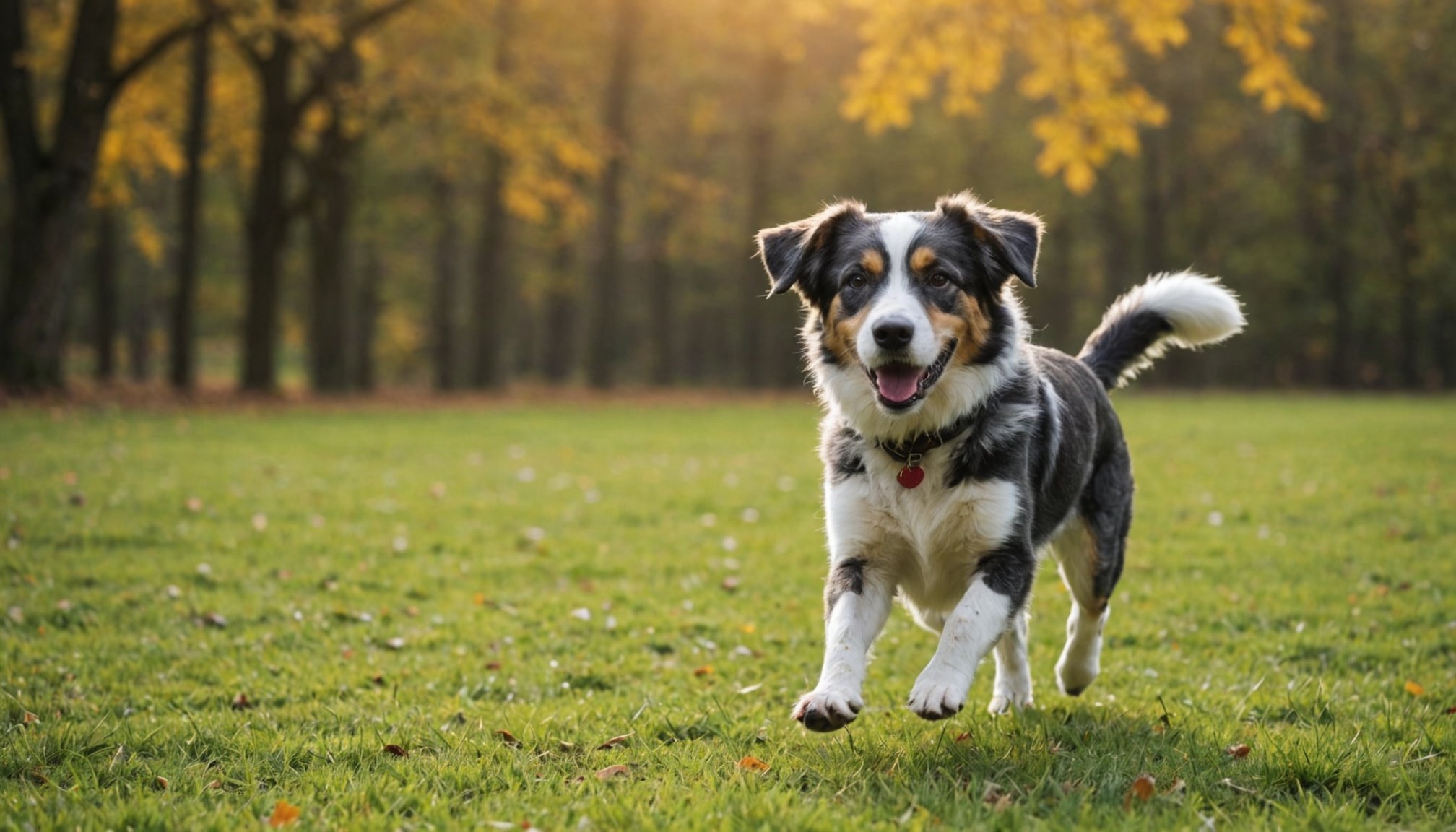Supporting a dog with hip dysplasia requires careful consideration of exercise choices. The right activities can improve your pet’s mobility and overall well-being, while the wrong ones can lead to further pain and discomfort. This guide helps you identify safe exercises tailored to your dog's condition, ensuring they stay active and happy. Discover practical tips and insights that empower you to make informed decisions for your furry friend’s exercise regime.
Understanding Hip Dysplasia in Dogs
Hip dysplasia is a common orthopedic condition affecting many dogs, impacting their mobility and overall joint health. This condition is characterized by a malformation of the hip joint, where the ball and socket do not fit or develop properly, leading to joint instability and discomfort.
Also to read : The Ultimate Guide to Selecting the Ideal Winter Sweater for Your Hairless Cat
Common Breeds Affected
Certain dog breeds are more predisposed to developing hip dysplasia. Large and giant breeds such as German Shepherds, Labrador Retrievers, and Golden Retrievers are particularly susceptible. However, it's important to note that smaller breeds can also be affected, albeit less frequently.
Symptoms and Signs
Recognizing the symptoms of hip dysplasia early can significantly improve a dog's quality of life. Look for signs such as:
Have you seen this : Unlocking Fun: The Ultimate Guide to Selecting the Perfect Interactive Toys for Your Solo Parakeet
- Decreased activity or reluctance to rise, jump, or run
- Lameness in the hind legs or an altered gait
- Stiffness or soreness after exercise
- Difficulty climbing stairs
Understanding these indicators can help pet owners seek timely veterinary care, ensuring better management of their dog's canine joint health.
Importance of Safe Exercise for Dogs with Hip Dysplasia
Understanding the role of exercise in managing hip dysplasia is crucial for maintaining your dog's health. Safe and appropriate canine exercise can significantly enhance their fitness levels, helping to manage pain and improve mobility. However, it's essential to approach this with caution, as improper exercise can exacerbate the condition.
Benefits of Maintaining Fitness
Regular dog fitness routines tailored to the needs of dogs with hip dysplasia can offer numerous benefits. These include:
- Strengthening the muscles around the joint, providing better support
- Enhancing flexibility and reducing stiffness
- Improving overall well-being and mental health
Engaging in the right type of exercise helps in weight management, which is crucial for reducing stress on the joints.
Role of Exercise in Pain Management
Exercise plays a pivotal role in managing pain associated with hip dysplasia. Low-impact activities such as swimming or walking on soft surfaces can alleviate discomfort while promoting joint health. A well-structured exercise program can help maintain mobility, making everyday activities less challenging for your furry friend.
Risks of Improper Exercise
While exercise is beneficial, it's important to avoid activities that may harm your dog. High-impact exercises like jumping or running on hard surfaces can worsen hip dysplasia symptoms. Always consult with a veterinarian to design a safe exercise plan that suits your dog's specific needs.
Recommended Exercises
- Swimming: Provides excellent cardiovascular benefits without stressing the joints
- Leash walking: Encourages movement while allowing control over pace and distance
- Physical therapy: Tailored exercises under professional guidance
By carefully selecting the right canine exercise routines, you can help your dog maintain fitness and mobility, improving their quality of life despite the challenges of hip dysplasia.
Selecting Appropriate Exercises
Choosing the right exercise selection is vital for managing hip dysplasia in dogs. Ensuring activities are safe and tailored to your dog's needs can significantly improve their quality of life.
Low-Impact Activities
Low-impact activities are essential for maintaining your dog's joint health without adding undue stress. Swimming is an excellent option, providing cardiovascular benefits while being gentle on the joints. It allows dogs to exercise without bearing their full body weight, making it a joint-friendly exercise. Additionally, walking on soft surfaces like grass or sand can help reduce stress on the joints. Utilizing harnesses during walks offers better support and control, ensuring your dog's safety and comfort.
Strengthening Exercises
Building core strength is crucial for enhancing stability in dogs with hip dysplasia. Incorporating targeted activities like sit-to-stand exercises can help in muscle building, improving joint support. It's important to focus on a gradual progression of exercise intensity to avoid overexertion. By slowly increasing the difficulty, you can safely enhance your dog's physical capabilities and overall strength.
Mental Stimulation through Exercise
Physical activity isn't the only component of a comprehensive exercise plan. Mental stimulation is equally important for a dog's well-being. Incorporating playtime that engages their mind can provide cognitive benefits. Puzzle toys and interactive games can challenge your dog's problem-solving skills, offering a balanced approach to exercise. Balancing both physical and mental activities ensures a holistic approach to your dog's health, promoting both physical fitness and mental engagement.
Recommended Exercise Routines
Understanding the importance of exercise routines is essential for managing hip dysplasia in dogs. A well-structured plan can enhance their quality of life.
Sample Daily Exercise Schedule
To maintain your dog's joint health and mobility, consider implementing a balanced daily exercise schedule. Here’s a sample routine:
- Morning: 15-minute leash walk on soft surfaces
- Midday: 10 minutes of swimming, if accessible
- Afternoon: 5-minute sit-to-stand exercises
- Evening: 10-minute interactive play with puzzle toys
This routine offers a mix of low-impact activities and mental stimulation, ensuring a comprehensive approach to dog fitness.
Adjusting Routines Based on Comfort
It's crucial to tailor exercise routines to your dog's comfort level. Observe their reactions during activities and adjust accordingly. If your dog shows signs of discomfort, reduce the intensity or duration. A gradual increase in activity can help build strength without overexertion.
Importance of Consistency and Gradual Increases
Consistency is key in maintaining effective exercise routines. Regular activity helps in muscle strengthening and pain management. Gradually increasing the intensity of exercises ensures that your dog adapts safely, promoting better joint health over time.
By focusing on these aspects, you can create a supportive environment for your dog's daily activities, enhancing their overall well-being.
Precautions and Considerations
When managing hip dysplasia in dogs, understanding exercise precautions and implementing safety measures is essential to prevent further discomfort and promote joint health.
Recognizing Discomfort
Monitoring your dog for signs of discomfort during and after exercise is crucial. Look for indicators such as:
- Excessive panting or drooling
- Limping or favoring one leg
- Reluctance to continue moving
- Whining or vocalizing pain
Recognizing these signs early can help in adjusting exercise routines to better suit your dog's needs, ensuring their comfort and safety.
Recommended Exercise Duration
Determining the appropriate duration for different types of exercises is vital for maintaining your dog's well-being. Here is a guideline for safe exercise durations:
| Exercise Type | Recommended Duration |
|---|---|
| Leash Walking | 15-20 minutes |
| Swimming | 10-15 minutes |
| Sit-to-Stand | 5-10 repetitions |
| Interactive Play | 10-15 minutes |
Adhering to these durations can help maintain joint health without causing undue stress or fatigue.
Consulting a Veterinarian
Before starting any new activities, consulting a veterinarian is imperative. A professional can provide tailored advice, ensuring that exercise routines align with your dog's specific condition and capabilities. They can also recommend safety measures to minimize risks, enhancing your dog's overall exercise experience.
By considering these factors, you can create a safe and effective exercise plan that supports your dog's health and mobility.
Expert Tips and Case Studies
Exploring expert insights and real-world experiences can provide invaluable guidance for managing hip dysplasia in dogs.
Insights from Veterinarians
Veterinary advice is crucial when developing an effective exercise management plan for dogs with hip dysplasia. Veterinarians emphasize the importance of low-impact exercises and stress the need for consistency and gradual progression. Dr. Emily Thompson, a renowned veterinarian, advises, "Tailoring exercises to each dog's capabilities is essential. Regular evaluations help in adjusting routines to ensure optimal joint health." Veterinary professionals recommend incorporating activities like swimming and controlled leash walking to enhance mobility without overstraining the joints.
Success Stories of Improvement
Numerous case studies highlight the positive impact of structured exercise on dogs with hip dysplasia. For instance, Max, a Labrador Retriever, showed significant improvement in his mobility after a dedicated regimen of swimming and physical therapy. His owner noted, "With consistent exercise, Max's discomfort decreased, and his enthusiasm for playtime returned." These success stories underscore the potential of a well-designed exercise program in enhancing a dog's quality of life.
Recommended Equipment
To ensure safety and effectiveness during exercise, certain equipment is recommended. Using a harness instead of a collar can provide better support and control during walks. Additionally, non-slip mats in swimming areas can prevent injuries. Here's a list of recommended equipment:
- Harnesses for better control
- Non-slip mats for swimming
- Elevated feeding stations to reduce joint strain
By integrating these tools, pet owners can create a safer and more supportive environment for their dogs, promoting better outcomes in managing hip dysplasia.











